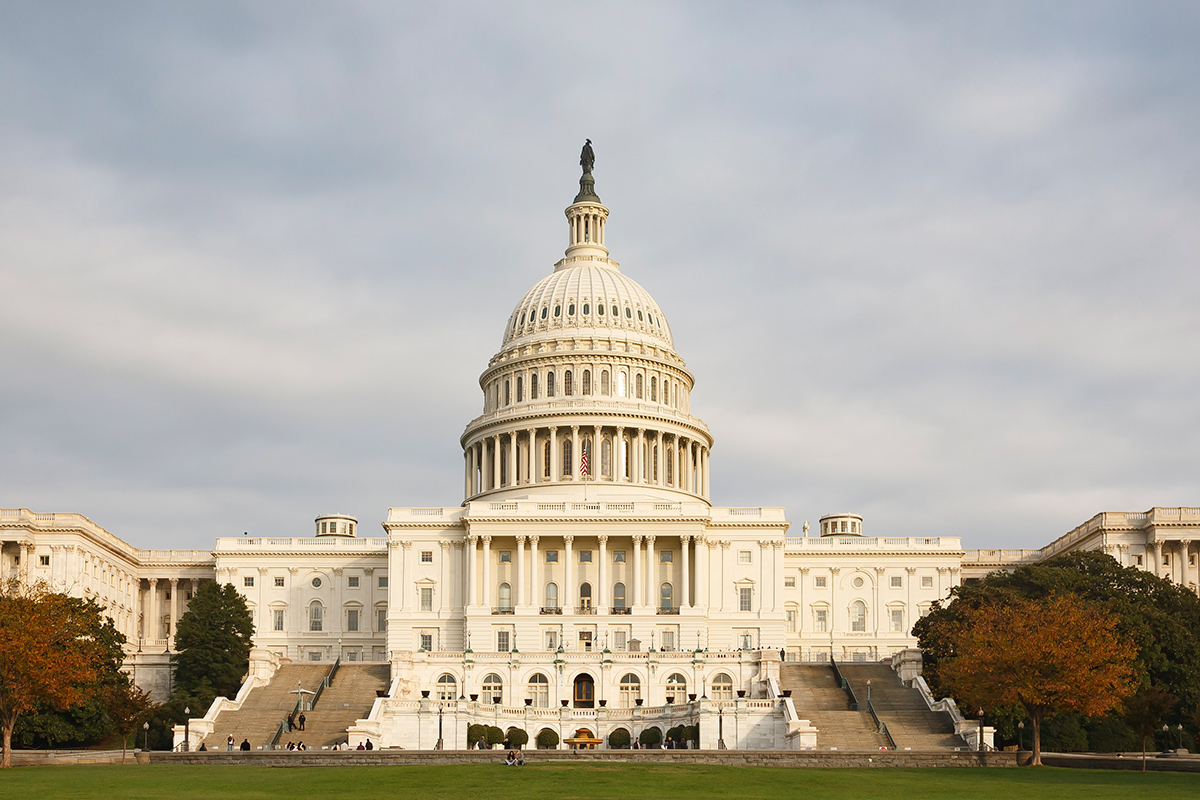
Key Takeaways:
The One Big Beautiful Bill Act, just signed into law as of July 4, 2025, is properly named in one respect: the bill is certainly “Big”! It’s still to be determined if it can live up to being “Beautiful”, whatever that may mean for an act of Congress.
There are dozens of new or continuing tax law provisions taking effect under this new bill. Some are immediately effective for the current 2025 tax year, while others are not effective until future tax years. If nothing else, one positive outcome of this bill is the relative clarity it provides for many tax laws that were previously set to expire at the end of this year.
Now that the One Big Beautiful Bill Act is current law, we want to highlight Five Big Takeaways that may have an impact on personal and family wealth planning:
1. Estate Tax Exemption – $15 Million in 2026
The current lifetime federal estate and gift tax exemption for 2025 is $13.99 million per person. With some exceptions, this basically means that you can either gift during your lifetime or leave at death up to $13.99 million of assets without being subject to estate or gift tax.
The new tax law has now increased this exemption level to $15 million per person in 2026, indexed for inflation in future years.
Before the new tax law passed, the estate/gift exemption level was on track to “sunset” and potentially be cut in half, which would have put married clients with a net worth in range of $14M-$30M potentially subject to estate or gift tax. So the big news here is that the potential estate tax cliff that had been looming for 2026 has now been avoided.
Planning Point
For families with estate plans still affected by the federal estate and gift tax limits, the One Big Beautiful Bill Act provides some clarity for future tax planning and additional space for exemption planning in 2026.
2. Charitable Planning – Itemized Deductions for 2026
There will be a new, general Itemized Deduction Limitation for high-income taxpayers in the top 37% tax bracket. Effectively, a new formula will limit the benefit of total itemized deductions to 35%, rather than 37%. This is a marginal, but notable change for higher-income clients that will be effective starting in 2026.
Also beginning in 2026, there will be an additional charitable limitation for all taxpayers that itemize deductions. The formula technically reduces the amount of deductible charitable donations by 0.5% of Adjusted Gross Income (AGI). As a rough example, let’s say you itemize deductions and have $100,000 of AGI in 2026. This new rule will limit the deductibility of your donations by $500, since 0.5% of your AGI = 0.5% x $100,000 = $500. So, if you itemize and make $20,000 of charitable donations in 2026, only $19,500 would be deductible—$20,000 less the $500 new income-based limitation.
The bottom line for this new itemized charitable deduction limitation is that higher income will slightly reduce the deductibility of your charitable donations. At lower income levels this formula change may not have much meaningful impact, but the net tax difference for higher-income clients could translate to considerable dollar amounts.
Planning Point
As always, your charitable intentions and motivation for giving (how much to donate, when the charity needs the most support, etc.) should be the primary factors for deciding the timing and amount of a significant donation. However, as a secondary consideration, it may be worth consulting your tax advisor if you are a higher-income taxpayer looking to make significant charitable donations within the next year. Your tax
Planning Point
For clients subject to Required Minimum Distributions from their Traditional IRAs, the tax benefit of donating directly from an IRA to charity—donations known as Qualified Charitable Distributions or QCDs—may be even more appealing with the introduction of these further itemized charitable limitations taking effect in 2026.
3. Business Tax Items
Since 2018, certain business owners have been able to claim an additional deduction based on their passthrough business income known as the Qualified Business Income (QBI) deduction. This deduction remains intact for 2025, and the new tax law has now extended the QBI deduction to 2026 and beyond.
In addition, certain expensing deductions for business property, Research & Development expenses, and depreciable business assets have been either expanded or extended for 2025 and going forward.
Planning Point
For clients subject to Required Minimum Distributions from their Traditional IRAs, the tax benefit of donating directly from an IRA to charity—donations known as Qualified Charitable Distributions or QCDs—may be even more appealing with the introduction of these further itemized charitable limitations taking effect in 2026.
4. Other Income Tax Changes Effective for 2025
A number of other income tax changes under the One Big Beautiful Bill Act have now taken effect as of the current 2025 tax year. Some of the more newsworthy items you may have seen include:
Increased SALT Deduction Limit
Effective for 2025, you may now be able to take up to $40,000 as an itemized deduction for state and local taxes (SALT). This maximum deduction amount is a significant increase from the prior cap of $10,000. However, this is a temporary increase and there are income phaseouts that apply. Taxpayers with $500k or more in income will see a reduced SALT deduction maximum, potentially all the way down to the prior $10k SALT deduction cap if income is at or above $600k.
Additional Senior Deduction
New to 2025—and scheduled to lapse after 2028—is an additional Senior Deduction available for taxpayers age 65+. The new Senior Deduction is $6,000 for each qualified taxpayer, potentially $12,000 for married filing joint if both taxpayers are eligible. There are, however, income phaseouts for this deduction as well if income is above $150k married filing joint ($75k for single filers.)
Increased Standard Deduction
The new tax law has slightly increased the amount for those who elect to use the standard deduction. For 2025, the standard deduction will now be $31,500 for married filing joint (up from $30,000) and $15,750 for single filers (up from $15,000.)
Increased Child Tax Credit
The Child Tax Credit for 2025 has also increased from $2,000 to $2,200 for those eligible, indexed for inflation in 2026 and beyond.
New Deductions for Tip and Overtime Income
Other brand new provisions include deductions for tip and overtime income. Effective for 2025 through 2028, taxpayers may be able to deduct up to $25,000 of tip income and up to $12,500 of overtime income ($25,000 if married filing joint) under the new rules. Similar to other deductions, in addition to the maximum deduction amounts, there are also income phaseouts that apply.
Planning Point
If these or other income tax rule changes effective for 2025 might decrease the amount of net tax you will owe for your 2025 tax return, it may be worth reviewing and adjusting your tax withholding elections and/or adjusting your upcoming Q3 and Q4 estimated payments. In general, it’s best to avoid overpaying income tax early and having to wait for your money back as a bigger-than-necessary refund at tax filing time.
Clean Energy Tax Credits Repealed
In addition to current tax breaks that are expanding or are being extended, there are some tax breaks that are now set to go away. Specifically, many of the currently existing Clean Energy Tax Credits—including the Clean Vehicle Credit and Residential Clean Energy Credit as examples—have now been repealed under the new tax bill. Some of these energy credits, however, are still in effect for part or all of the remainder of tax year 2025, possibly into 2026.
Planning Point
If you are looking to purchase certain types of electric vehicles, or if you are considering energy-efficient home upgrades, you may want to review the specific rules for these clean energy tax credits that may still be available for 2025.
5. Coming in 2026 – Minor IRA Accounts (“Trump Accounts”)
The tax bill also introduces a new type of savings account that will become available for beneficiaries under the age of 18. The text of the bill refers to these savings accounts as “Trump Accounts”, but from what we can tell they will effectively be specialized IRAs that can be funded for the benefit of minors.
It appears that this special type of minor IRA account cannot be opened until July 2026 or possibly later.
When available, there is supposed to be a pilot program for the government to fund a $1,000 contribution to each new minor IRA account established for eligible newborns 2025-2028. The tax bill also suggests that non-deductible annual contributions of $5,000 up to age 18 will also be allowed with additional, potentially overlapping limits and rules for contributions from employers and other entities.
We will be keeping a close eye on the specific rules for these new minor IRA accounts as they are clarified over the coming months.
Planning Point
There is no effective action available until 2026 for these specialized minor IRAs (“Trump Accounts.”) Many logistical and technical tax questions are still to be clarified, but it is possible that this new account type could play a role within a broader family gifting plan.
A Couple Other Notable Changes
Amongst dozens of other provisions within the One Big Beautiful Bill Act, here are a couple other notable tax changes upcoming:
Staying Up to Date with a Planning Focus
As the tax, legal, and economic landscape continues to change, we strive to keep you updated on relevant changes that may affect you and your family’s financial picture. If you have more detailed questions about how some of the One Big Beautiful Bill Act provisions may affect you, please reach out to us. We are here to help assess financial strategies and implement any priority action items.
Sincerely,
Jason and your Saling Wealth Advisors Team
This material is not financial advice or an offer to sell any product and is not a recommendation to buy or sell any particular security. The opinions expressed are those of the Saling Wealth Advisors’ Management Investment Team and are subject to change without notice.
Saling Wealth Advisors (“SWA”) is an independent SEC registered investment advisor. Registration does not imply a certain level of skill or training. This material is provided for informational and educational purposes only. More information about SWA including our advisory services, fees, and objectives can be found in our Form ADV Part 2A, which is available upon request.




